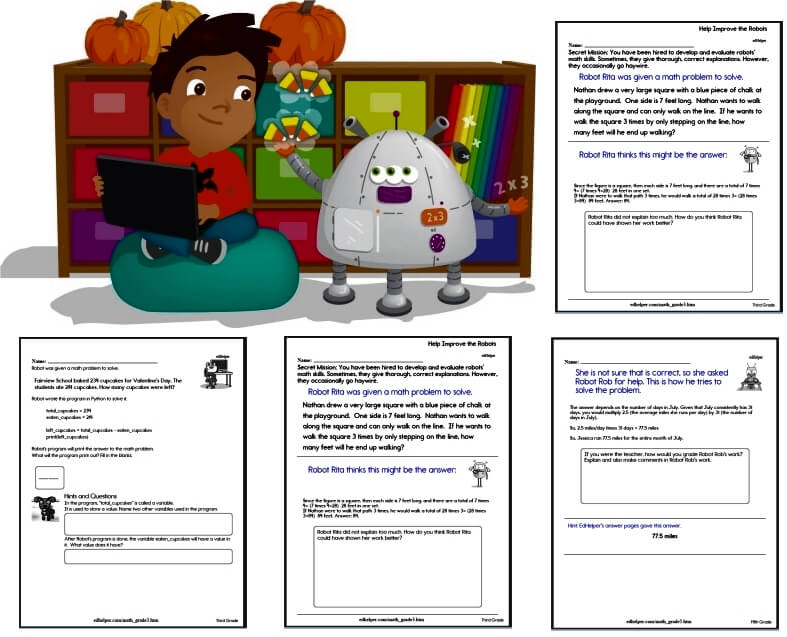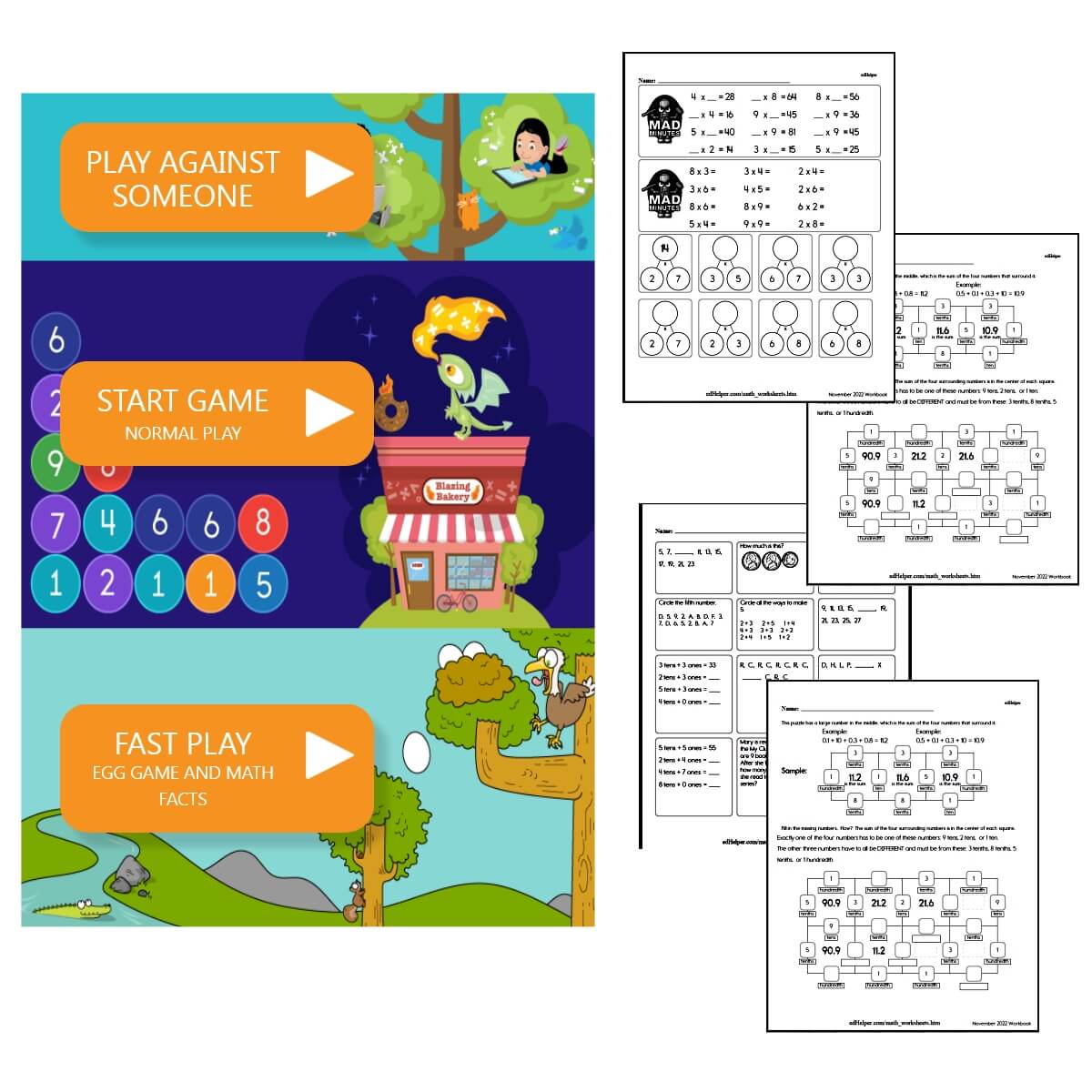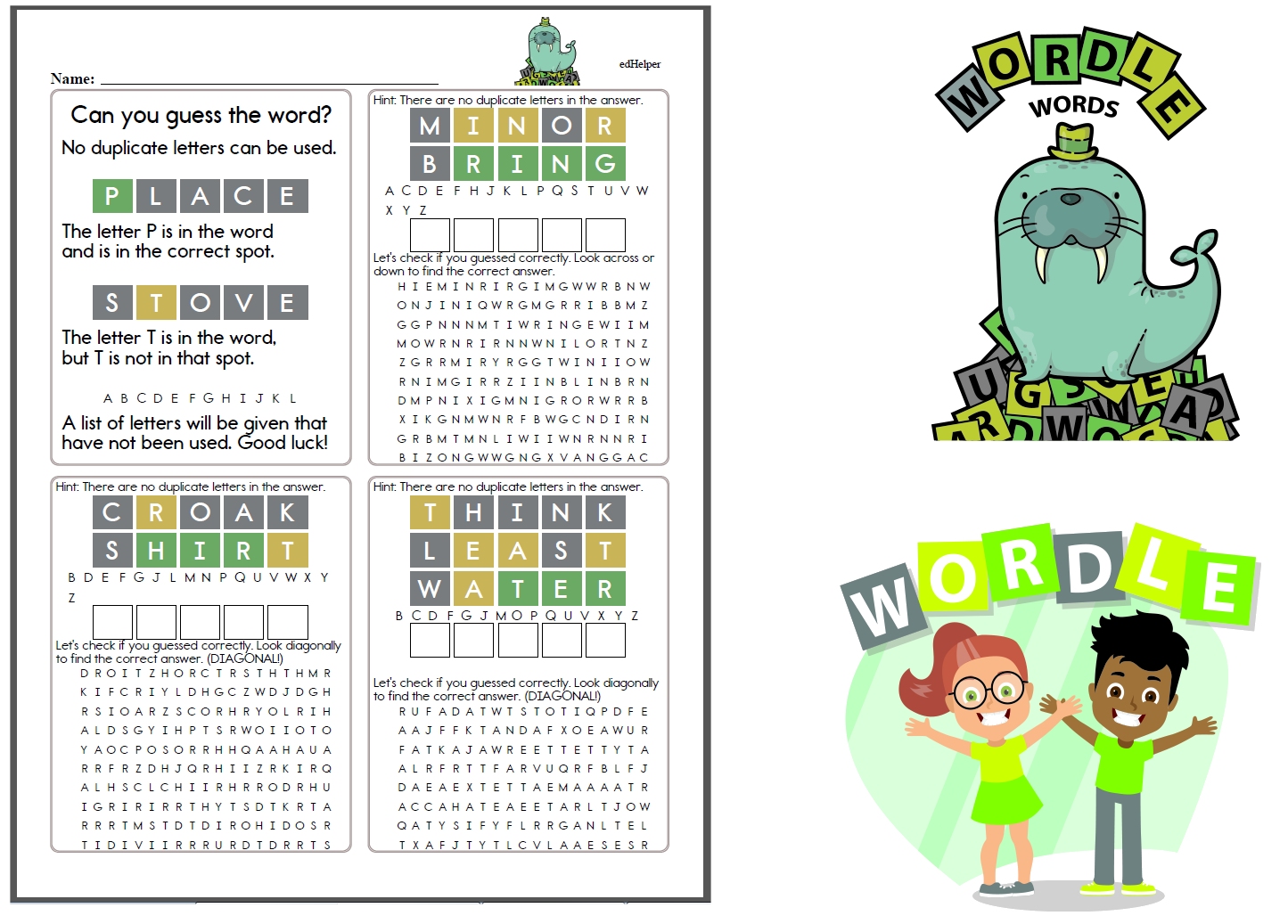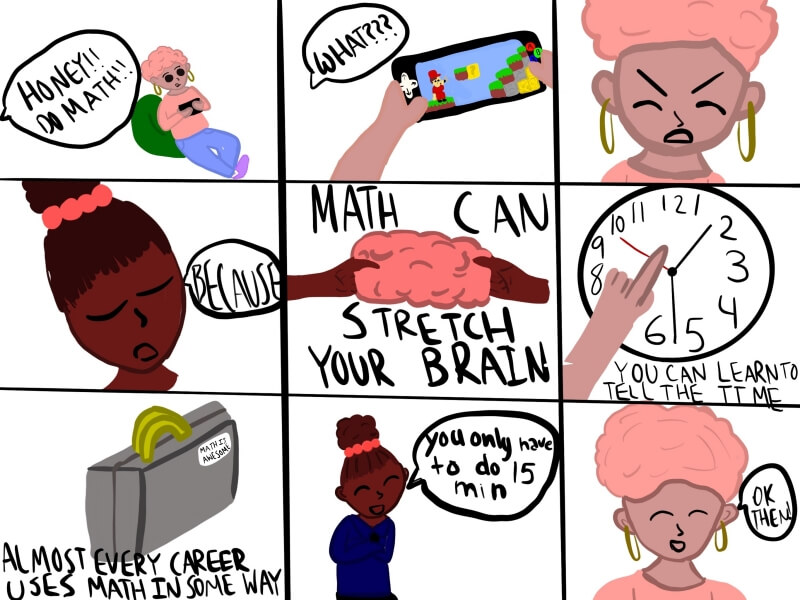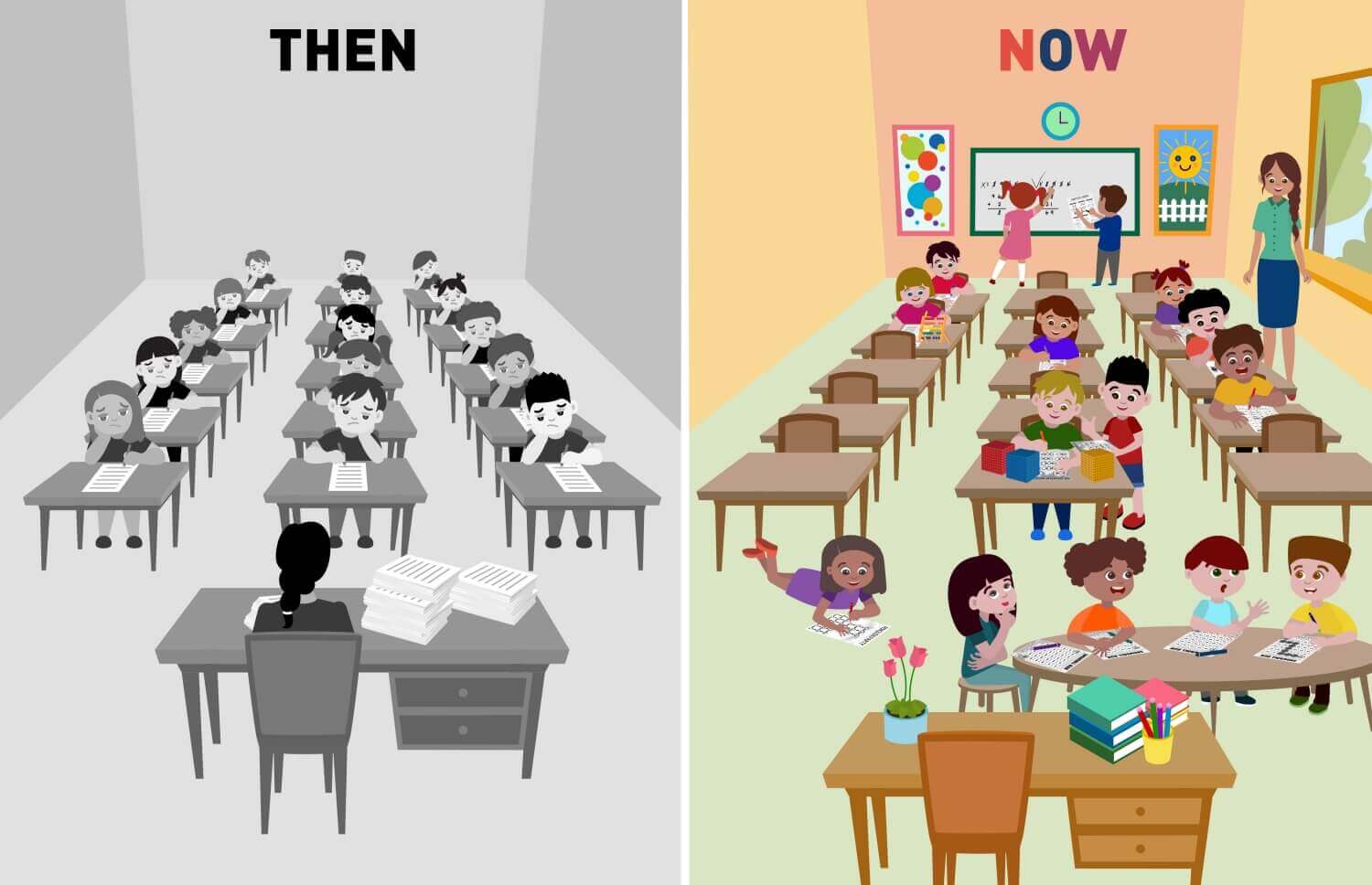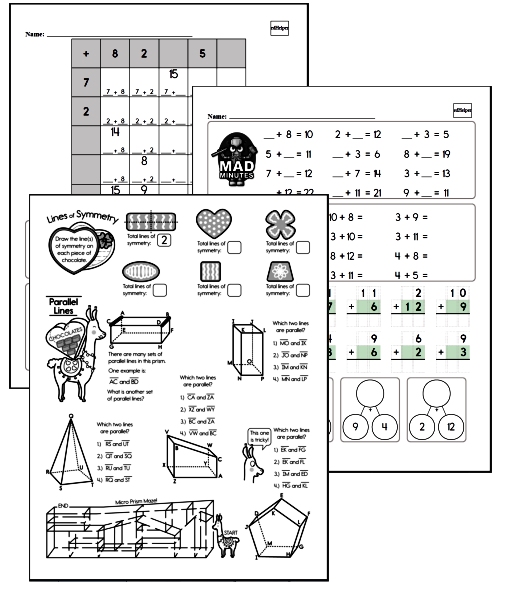Is there a need to teach math differently to girls and boys?
By: edHelper Staff
Updated: Nov 9, 2023

Boost Math Skills in the Classroom With These Teaching Tips for Boys and Girls
Math can be a loaded subject to teach in any grade. Teachers, students, and parents have personal opinions about the subject. It isn't uncommon for students to proclaim, "I can't do this!" during a math lesson. Parents often throw up their hands in defeat and say, "That's not how I learned!" when helping their child do their homework.
Math doesn't have to be as scary as it often seems. If you know the differences between how boys and girls learn math, you can teach to their strengths.
First, let's tackle the lack of girls in STEM (science, technology, engineering, and mathematics) so you can combat it in your classroom.
Fighting Stereotypes
Many of us hold a conscious or unconscious belief that math is only for boys. In one study, teachers rated girls' math proficiency lower than that of boys despite similar achievement and learning behaviors, perpetuating this stereotype.
Teachers distribute praise differently to boys and girls. Teachers tend to praise boys more for displaying correct knowledge while criticizing girls for incorrect knowledge. That means boys' wrong answers and girl's right answers are overlooked. The effect is that boys tend to feel more confident in math, while girls' confidence suffers.
All of this has very real consequences. Women hold nearly half of all US jobs, but less than a quarter of STEM jobs. That leaves fewer real-life examples of mathematically savvy women for girls to look up to.
A Matter of Confidence
That brings us to the old trope that boys must be better at math if there are more men in STEM-related fields and boys in math classes, especially in middle school, high school, and college. Even in a college math class with 25 women and 25 men, it isn't uncommon for professors to be left with just five women by the second semester.
It turns out that it doesn't have anything to do with smarts. As a matter of fact, according to research, girls do better in school than boys. They get better grades in STEM subjects, too. So why aren't more girls pursuing STEM classes and careers?
Without encouragement, girls don't feel confident in math. Even if they're interested in and good at math, they still won't feel confident if their teachers unknowingly downplay their wins.
And they have good reason to leave math behind in favor of other pursuits. Girls have a small (and usually invisible) advantage over boys in math, but they have a bigger (and often more visible) advantage over boys in non-STEM subjects. When a girl doesn't feel confident in math but feels confident in reading, for example, she's more likely to pursue literature and drop math.
The Truth Is That Math Can Be Hard for Boys and Girls
Girls indeed have a disadvantage in math, but that doesn't mean boys have it easy. The truth is that all teachers can find examples of girls who naturally excel in math and boys who struggle. In short, math can be hard for both boys and girls.
Girls who struggle in math may lean toward the arts and literature because that's where they get good grades and have confidence, while boys may receive more support from parents, peers, and even society to pursue sports when they aren't good at math.
It's well worth your time as a teacher to look for ways to make learning math a little easier for both genders.
Here are a few ways to shake up how you teach math so you can help boys and girls succeed in your classroom.
Teaching Boys: Get Active
There is truth to the stereotype that boys are more physically active than girls. In a subject like math, which traditionally requires a lot of time spent sitting at a desk, it can be hard for boys to focus.
But students don't always have to sit quietly at their desks! There are a lot of great math activities that require students to get up and stretch their legs. Chances are the girls in your class will enjoy the break from sitting too!
Here are a few ideas:
- The place value bean bag toss is a game where students count beanbags in bins labeled with place values to answer math problems.
- Use sidewalk chalk to create a math facts flower with 10 petals. Students write a number in the middle and then fill each petal with the correct answer to an addition, subtraction, or multiplication problem.
- Let kids throw sticky balls at a target and then analyze their throws by making a graph.
- Plot out a scavenger hunt on graph paper and let kids find the treasure.
- Ask students to jump, hop, and leap, and then have them measure the distance they covered.
Bonus tip: Let kids choose how they do independent seatwork.
Even with fun activities, math sometimes requires students to do independent seatwork quietly. Make sure boys and girls are comfortable by allowing them to choose how they do seatwork. Restless students could stand at their desks when completing a worksheet, while others might sit on the floor or in a quiet, private corner to complete their assignments.
Teaching Boys: Group Work
Boys tend to gravitate toward large groups. This explains why boys can appear partial to team-oriented sports. Play to this strength by including math group work.
That means making time to play math games as a large class; it might also mean breaking the class up to work on math problems in groups of three, four, or five students. Small group work allows boys to collaborate and comfortably learn from their peers.
Bonus tip: During group activities, encourage increased female participation.
Although group settings can help boys learn, they can be detrimental to girls. Boys tend to ignore girls' comments and contributions in a group setting. You can encourage female participation by assigning unique positions within the group. For example, each group might have a reporter who shares their findings with the class, a recorder who writes everything down, and a checker who checks the work for accuracy and clarity. That way, every group member has a valued role.
Teaching Girls: Pair Work
Although boys may prefer group work, girls tend to prefer more intimate groups. Incorporate partner work in class so girls also feel supported. Whether they fill out a worksheet, play a game, or simply sit in pairs during lessons, many girls thrive a partner to bounce ideas off of.
Bonus tip: Create mixed-gender pairs.
Boys and girls can learn a lot from each other, so don't shy away from putting them together. Mixed-gender pairings can help fight stereotypes, as boys learn that girls know about math, too!
However, make sure you also put girls with girls and boys with boys. Due to their similar learning styles, boys and girls can sometimes get more done separately. They may also feel additional encouragement when working with the same gender, especially in upper elementary and middle school.
Teaching Girls: Eliminate Competition
The traditional way of teaching math is very competitive. It's also the style of math that most parents grew up with, which is why it can be so difficult for mom and dad to help with homework. Quizzes and tests are scored, some activities are timed, and rote memorization is encouraged. It's all about finding the right answer and finding it fast.
Many girls don't thrive in this type of atmosphere. When they're criticized for wrong answers, it's easier not to answer at all, so you can end up with a classroom full of boys who participate and girls who sit quietly and watch.
Although finding the right answer is important, it's much better to emphasize the why behind the answer. Encourage deeper learning of mathematical principles, and girls will achieve higher test scores, feel more engaged, and get more motivated to continue pursuing math.
Bonus tip: You can still do some competitive activities, but emphasize effort and that making mistakes is okay.
That doesn't mean there isn't room for competitive activities in the classroom! After all, it's a great way to keep boys engaged in class.
The trick is to emphasize effort. For example, not only should you praise students for high scores or memorization of facts, but also, you should praise students for showing improvement and taking their time on a test.
In addition, you should create an environment where making mistakes is not only okay but encouraged. Let students make guesses, and let them try to find answers without any instruction. Look for correctness in their thinking, even if the answer they got was wrong. Boys and girls are more willing to try when they know making mistakes is okay.
Focus on Student Interest and Confidence in Math-Not Just Achievement
Math classes often focus on achievement, but if you want both boys and girls to feel capable, you must focus on other aspects.
Boys and girls are equally interested in math early on, but that interest can fade without the right support. Teachers can boost confidence by allowing their students to experience success in math class, potentially letting boys stand up when completing worksheets or letting girls work in pairs.
Confidence, combined with encouragement and past wins in math, encourages future success for all students, regardless of whether they are boys or girls.


